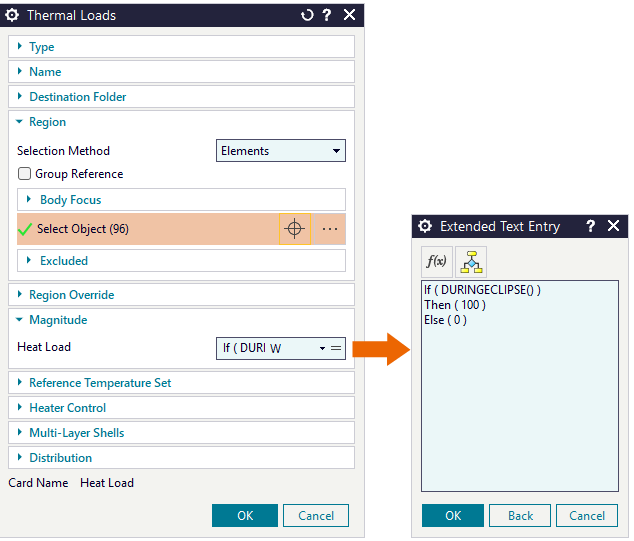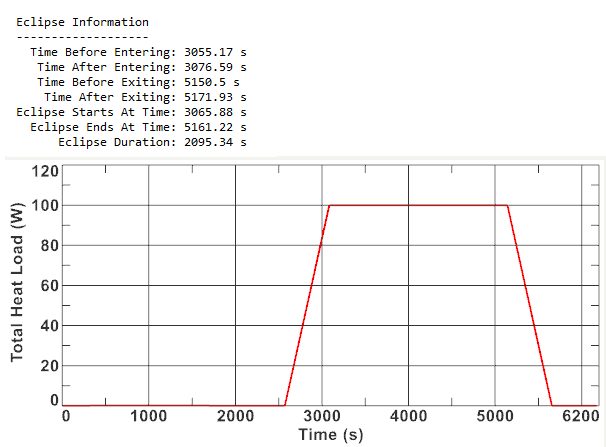How to control satellite boundary conditions during eclipse
This article explains how to control loads on satellite panels during eclipse periods without using complex time-dependent fields.
Details
When simulating satellite thermal behavior, boundary conditions often need to change depending on whether the spacecraft is in sunlight or eclipse. Usually, this requires creating multiple time-dependent fields, which can be complex and time-consuming.
Using the
DURINGECLIPSE() function, you can simplify this process by
directly switching loads or boundary conditions based on eclipse periods. This
function returns true when the solver time is within an eclipse and
false otherwise.
For example, to apply 100 W on a panel
during eclipse, and 0W in sunlight, you can use DURINGECLIPSE() as
an expression in the Thermal Loads dialog box as shown in the
following image.

From the results, the total panel heat load shows the effect of eclipse switching:
- The eclipse starts at 3065.88 s and ends at 5161.22 s.
- The heat load is 100 W during this period, and 0 W otherwise.

